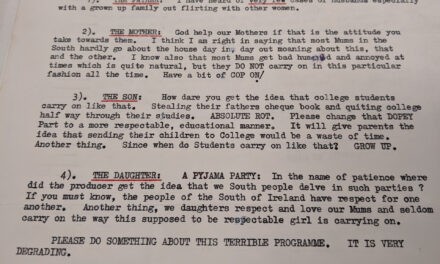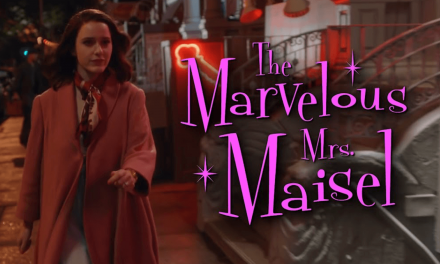According to Dr. Janet McCabe (Birkbeck) and Dr. Deborah Jermyn (Roehampton), co-organisers of Friday’s Age Spots and Spotlights one-day research symposium: ‘We live in a culture where youth is revered and envied, while ageing remains feared, even repugnant.’ One thing is clear, living your life in the glare of the media may bring its rewards, but once the glow of youth begins to fade, living those autumn years under the media’s microscope isn’t always so pretty.
Chaired by Dr. James Bennett (Royal Holloway) the first panel of the day, ‘Celebrity, Ageing and Performance’, comprised Birkbeck academics on a variety of topics. First up was Dr. Tim Markham, whose paper, based on interviews with BBC war correspondents, looked at the careers of Martin Bell, Jon Simpson and Kate Adie, and their younger colleagues’ opinions of their aged and gendered (in)appropriate behaviour. Concluding that age both undermines and supports war journalism, Markham’s paper argued that, in the end, Simpson, Adie and Bell function as repositories of our own projections. Prof. Mary Woods looked at the life and career of Franco Zeffirelli and pondered whether, in the twilight years of his long career, he could be considered an auteur or merely a celebrity. The final paper in this disparate bunch was Dr. Mike Allen and organiser McCabe’s engaging study of the BBC series The Trip. Focusing on music but mainly the vocal performances of the two stars, Rob Brydon and Steve Coogan, competing over the best Michael Caine impersonation, McCabe and Allen pondered how the ageing process feeds into nostalgia for and mourning of something that has passed and yet, at the same time, how vocal performances develop a kind of celebrity of their own over time.
The post-lunch Panel – Ageing and the Female Celebrity – kicked off with the University of Sunderland’s Dr. Susan Smith who looked at Elizabeth Taylor’s latter TV years. Smith’s paper argued that Taylor’s move into television was far from a symptom of her decline from movie star to ageing TV celebrity, but instead a way of reasserting a glamorous persona denied by cinema. Deborah Jermyn’s study of Diane Keaton’s career resurgence post-Something’s Gotta Give (Nancy Meyers, 2003) argued that romantic comedy, despite validating patriarchal norms, offers rich roles for older women.
Dr. Kirsty Fairclough (University of Salford) focused on the appearance of the ageing female celebrity on Internet gossip blogs. Looking at the way their looks are microscopically dissected she concluded that the ageing female treads a fine line between ageing gracefully and knowing a good plastic surgeon. Prof. Pam Cook presented the final paper on this panel, exploring the star as commodity using Nicole Kidman’s return to a ‘natural look’ as an intriguing case study. Ditching botox and being photographed in increasingly ‘natural’ settings may have been Kidman’s attempt to turn her back on years of surgery and regain previous career success, but Cook’s paper argued that this was just another side to the commodification of Kidman’s star persona.
If the morning was spent discussing the impact of ageing on performance, the afternoon’s panel firmly focused on the body, particularly female celebrities’ attempts to maintain or regain their youth. It can be no small coincidence that the first half of the day centred primarily on male agency whereas the afternoon’s focus was on women and their inevitable objectification. Prof. Ginette Vincendeau’s keynote address skilfully brought both of these areas together with a study on Brigitte Bardot and her star image. Vincendeau’s fascinating paper set Bardot’s sexually provocative, ingénue status against the way the French have turned their backs on her in her latter years. Arguing that Bardot’s early celebrity was seen as embodying the modernity of the French nation, a status that inevitably led to her letting down that very same nation with her outspoken political views and championing of animal rights. Not so much an ageing celebrity ‘letting herself go’ (although this is an accusation frequently levelled at her) but that her ‘ugly’ politics are written across her ageing face and body.
The final discussion, chaired by Prof. Laura Mulvey, was an animated affair that further coalesced the themes of the day. That the media fixates on women’s appearance is a given but what is surprising is how that focus is maintained away from the media spotlight. With so many prominent feminist academics both in the audience and on stage it was noteworthy that this dichotomy went more or less unremarked. How is it that in the 21st century we are still fixated on women’s ageing as a superficial, skin-deep, phenomenon? Particularly when there is a wealth of evidence suggesting that post-50 women are at their most productive, freed from the demands of their reproductive bodies and the needs of a young family. It seems to me that there is still a difficulty in addressing these issues, a fact borne out by the discussion of Bardot’s sexually provocative image. It may well be that her refusal to adopt a more ‘elderly’ and restrained style well into her 70s is at the heart of the public’s antipathy towards her as her plumped up lips, heavily mascara-ed eyes and long tousled hair clearly signal the sexual kitten, a look that, in the eyes of many, should have been abandoned many years ago.
Despite (or maybe because of) this conundrum, ‘Age Spots and Spotlights: Celebrity, Ageing and Performance’ proved a fascinating day. It was refreshing to see a majority of female presenters over the course of the day in contrast to so many recent symposia and conferences. To have such heavyweights as Pam Cook, Ginette Vincendeau and Laura Mulvey on the stage, and to sit in the company of equally distinguished delegates, was a heady thrill for this starry-eyed scholar. Janet McCabe and Deborah Jermyn should be applauded for organising such a successful event at Birkbeck’s Clore Centre. I am eagerly awaiting the next one.
Kim Akass is a lecturer in Cutural and Contextual Studies (Film/TV) and Senior Research Fellow at the University of Hertfordshire. She has published widely on US TV, is co-founding editor of Critical Studies in Television, is co-editor (with Janet McCabe) of The Reading Contemporary TV series for I.B. Tauris. She is currently working on a book about mothers in the media for I.B. Tauris and is webmistress of CSTonline.





